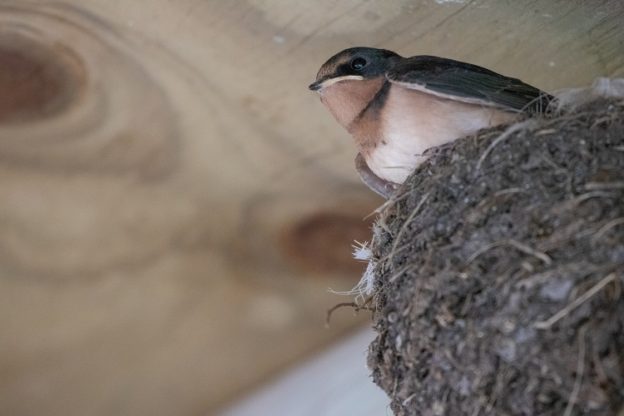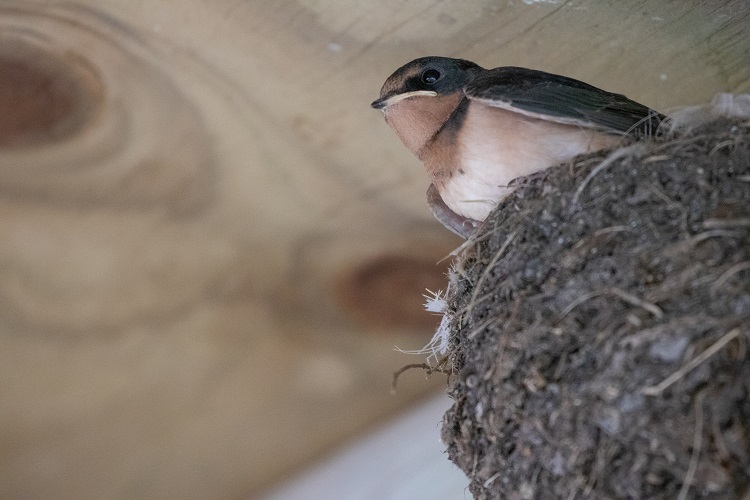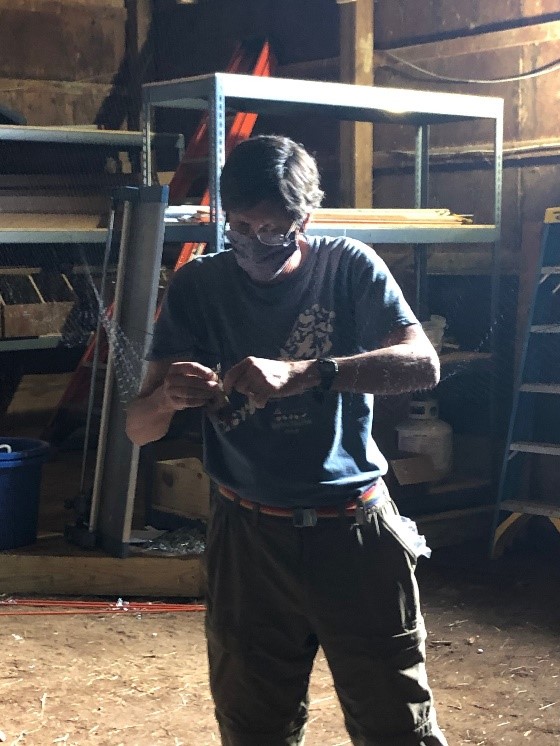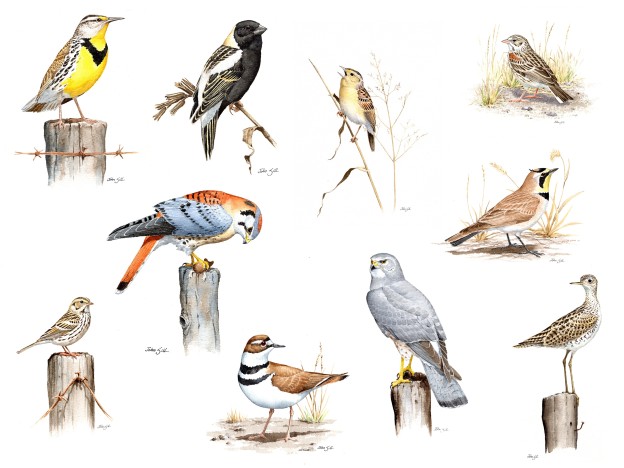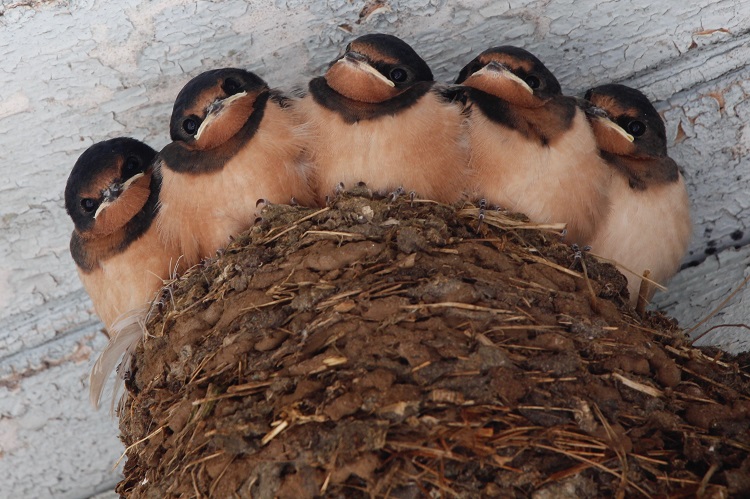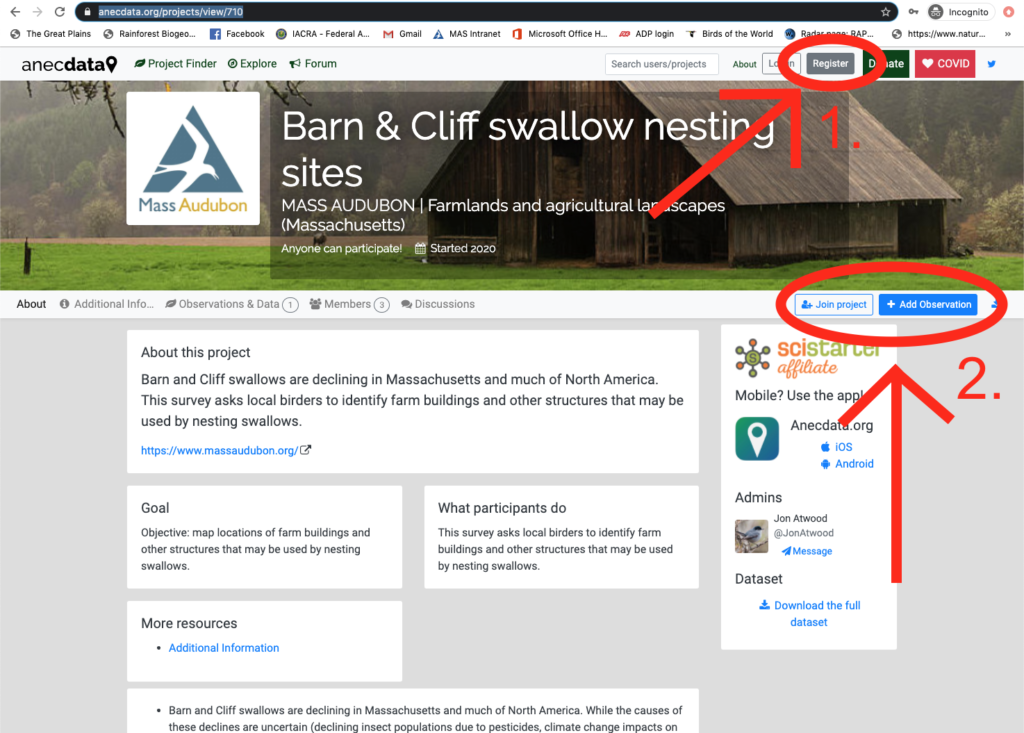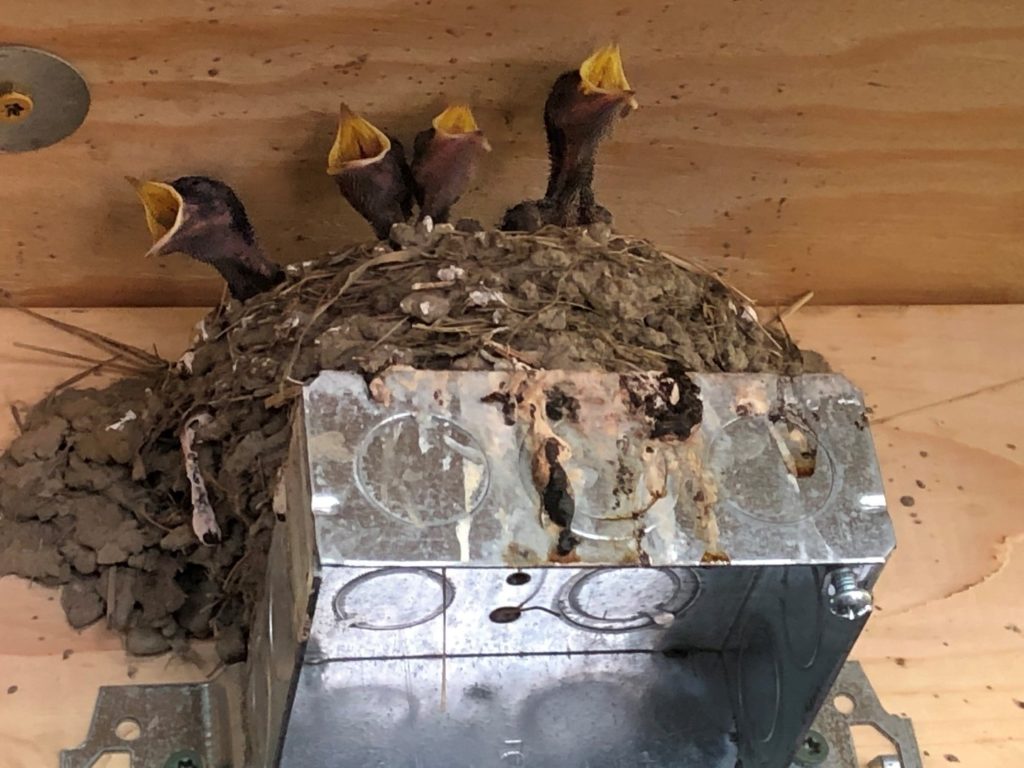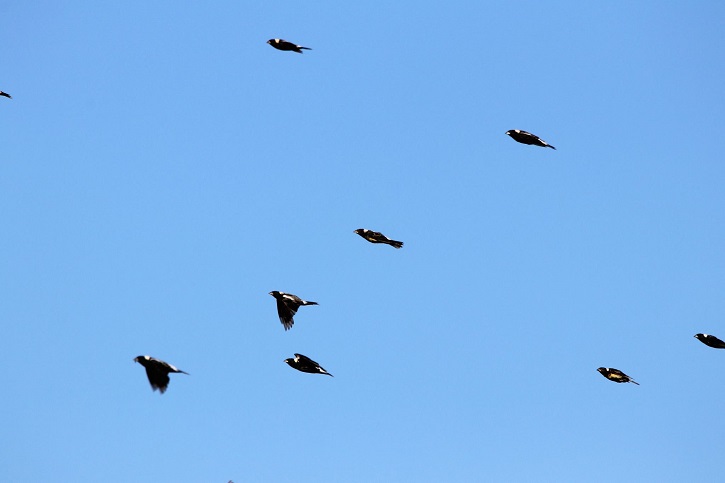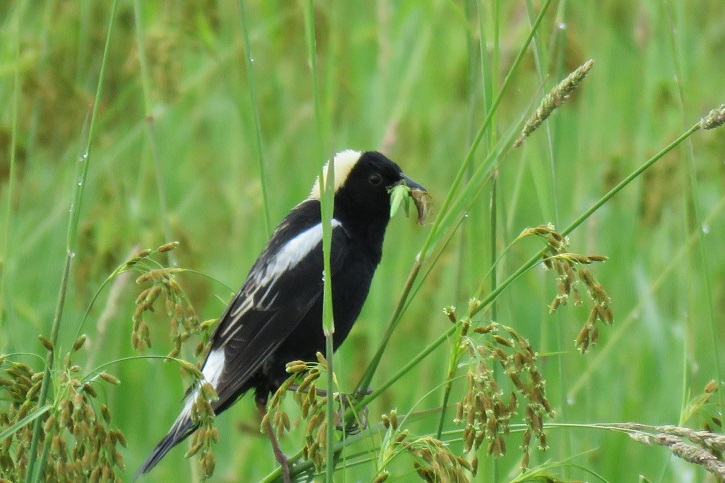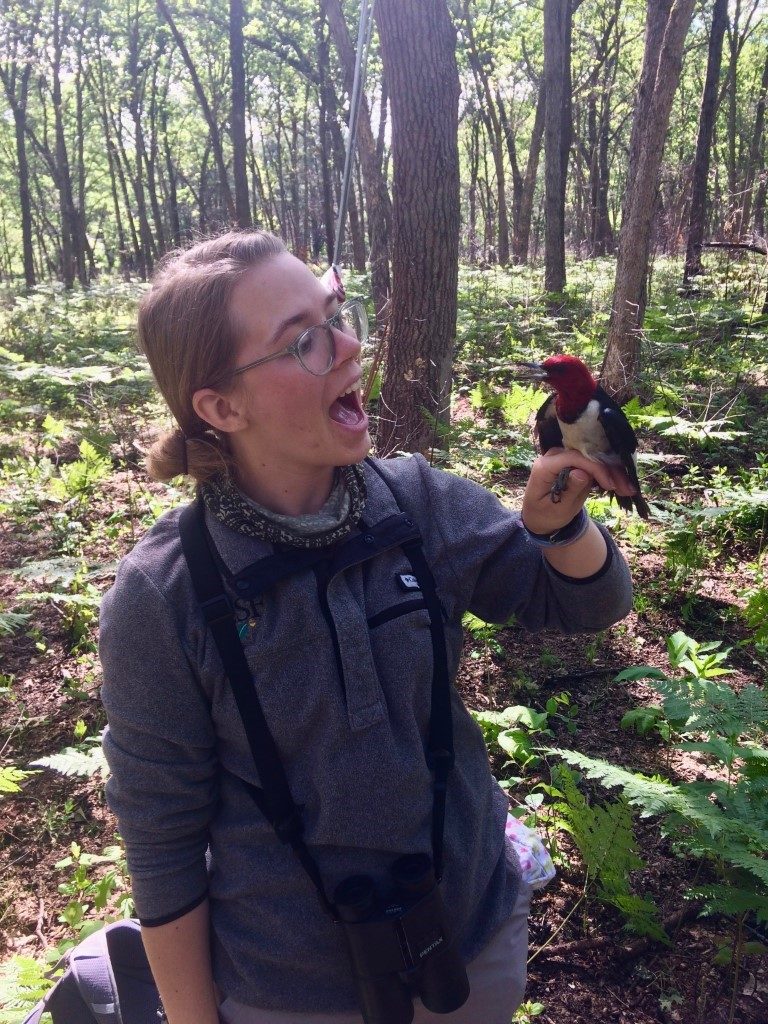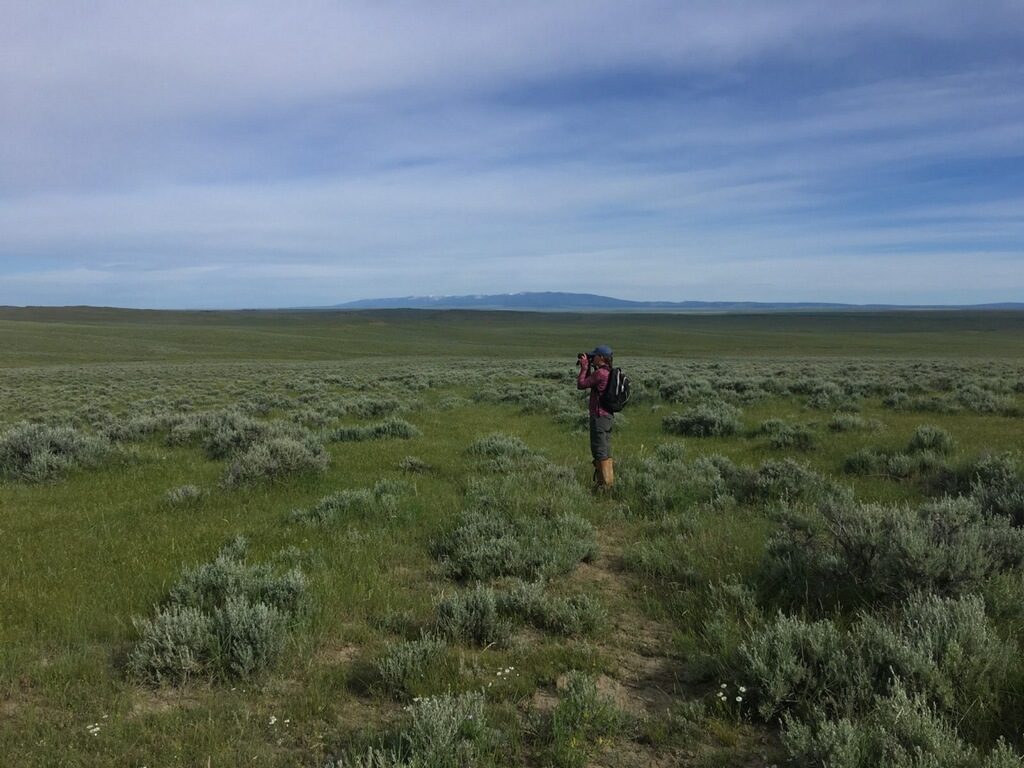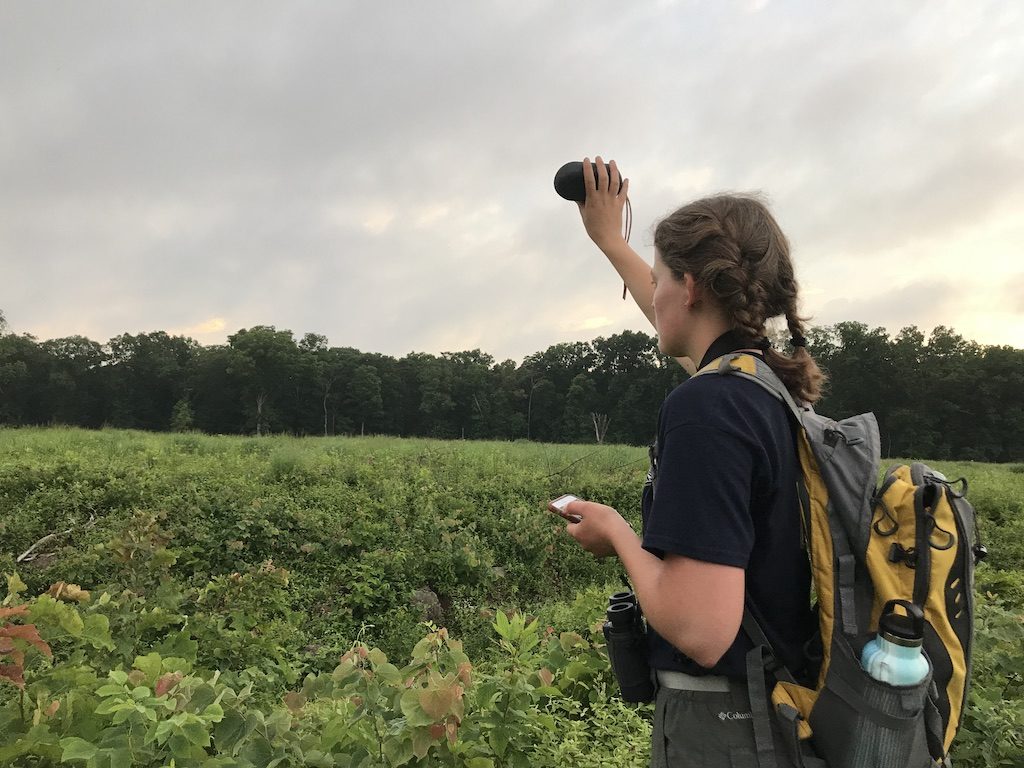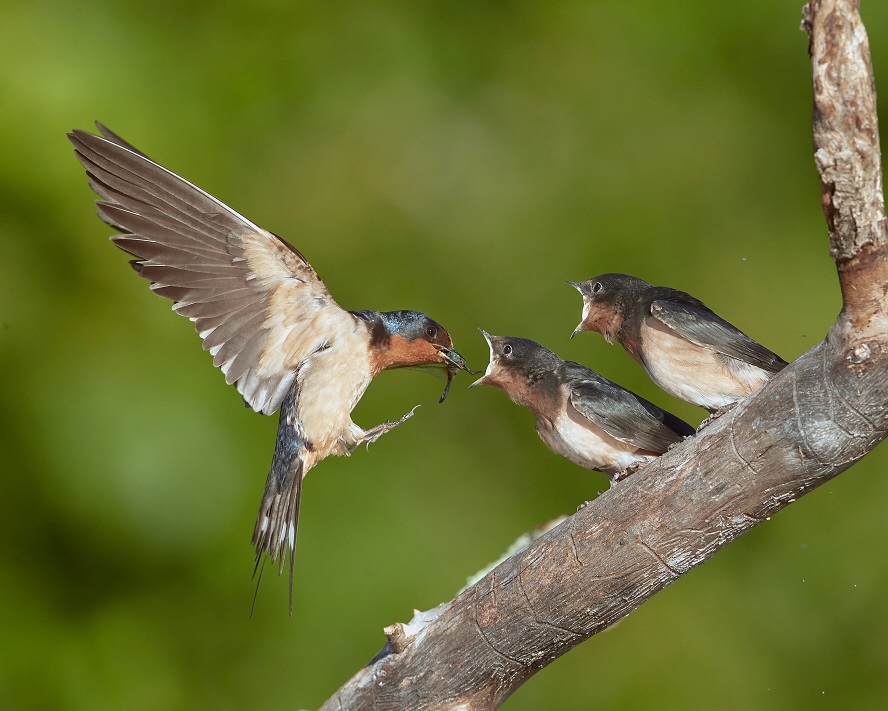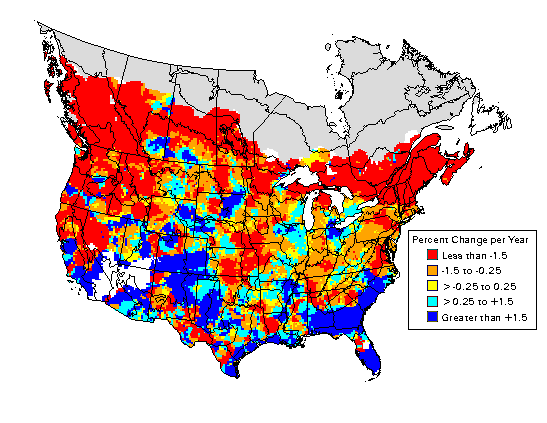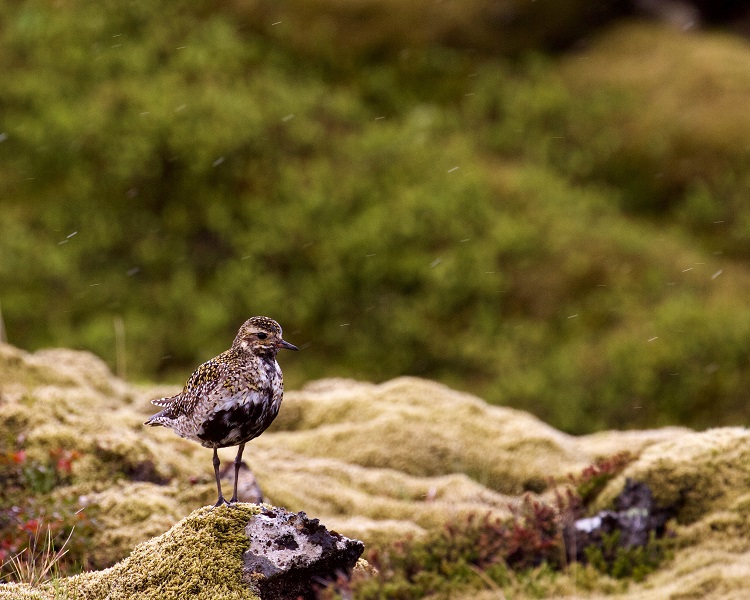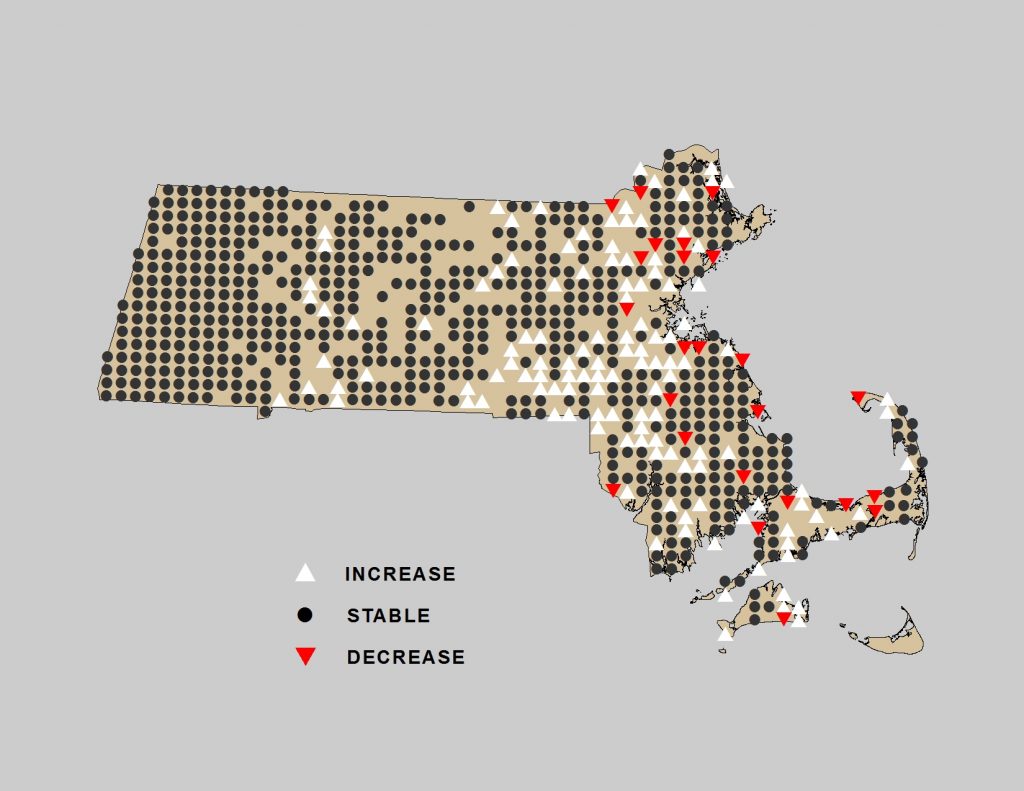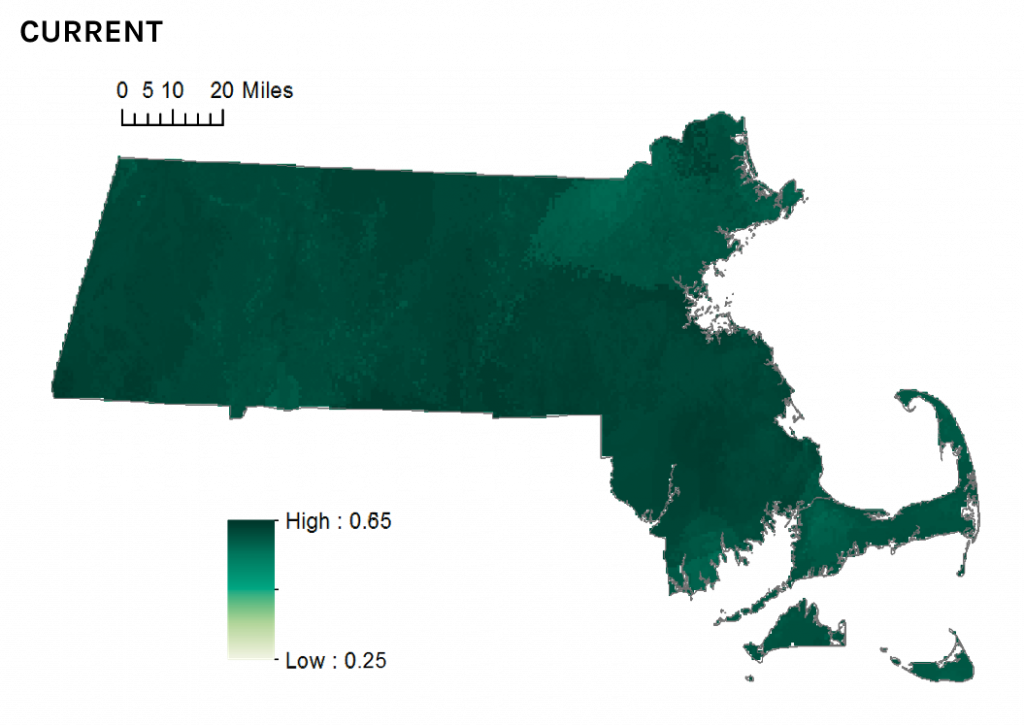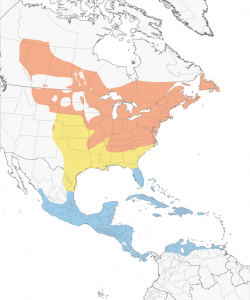Barn Swallows nesting at the Silvio O. Conte National Fish and Wildlife Refuge have had a successful season in 2020 in the Fort River Boat House. The full final report is available here.
Season Summary
We estimate that 30 – 38 pairs of Barn Swallows nested in the Fort River Boat House in 2020.
Of 98 adult swallows banded at Fort River in 2019, 27 were recaptured in 2020 (28%). This number is probably lower than the actual number present due to fewer banding days conducted this year during the pandemic. This return rate is similar to rates found in other studies of Barn Swallows. While a 28% return rate may not seem particularly high, remember that swallows banded in 2019 made two long migrations to and from South America before returning to breed in Massachusetts in 2020. And, because returning Barn Swallows don’t show perfect site fidelity, some individuals may have simply chosen to nest elsewhere in the area.

This Success Informs Future Conservation Actions
Aging barns occupied by Barn Swallows are a common feature in New England’s historical agricultural landscape, and sometimes these structures simply cannot be saved. Thanks to the help of collaborator Andy French, project leader at the Conte Refuge, we have learned important lessons about how to attract and relocate Barn Swallows into alternative structures where they can be protected in cases where occupied barns must be removed. Some of the steps that were taken included:
- Collection of some nests after the breeding season to use in attracting swallows the following year to a different, more secure nesting location. A majority of nests built in 2020 were built on top of “seed” nests that had been harvested in 2019.
- Placement of nesting structures, hung from the Boat House rafters, to provide nesting sites. Some of these structures also included defecation screens that prevented swallow droppings from raining down on equipment below—an important consideration for private landowners who often have to deal with bird damage to their tractors and other farm equipment.
- Playback of Barn Swallow vocalizations was used in 2019 to advertise the availability of the Boat House site to pairs that were nesting in the nearby Bri Mar Stable. In 2020, we decided not to play audio recordings because Barn Swallows had already begun to move into the Boat House in 2019.
Next Steps for Aerial Insectivore Conservation
Mass Audubon also hopes to continue to contribute to a developing US Fish and Wildlife Service initiative aimed at conserving aerial insectivores (e.g., Barn Swallows, Cliff Swallows, Chimney Swifts, bats, etc.), pollinators that feed in fields and field edges, and grassland-nesting species in the Connecticut River Valley. If we are successful in securing funds, we hope to collaborate with the Conte Refuge in 2021 to deploy VHF nanotags on breeding Barn Swallows to learn more about the locations of important feeding areas with presumably healthy insect populations. This work would also include education activities, working with private landowners to maximize the conservation benefits associated with their farms, as well as conducting inventories of declining birds and other taxa. We’ll post more information about these efforts in future blogs.
Support our efforts to conserve Barn Swallows and other birds >



